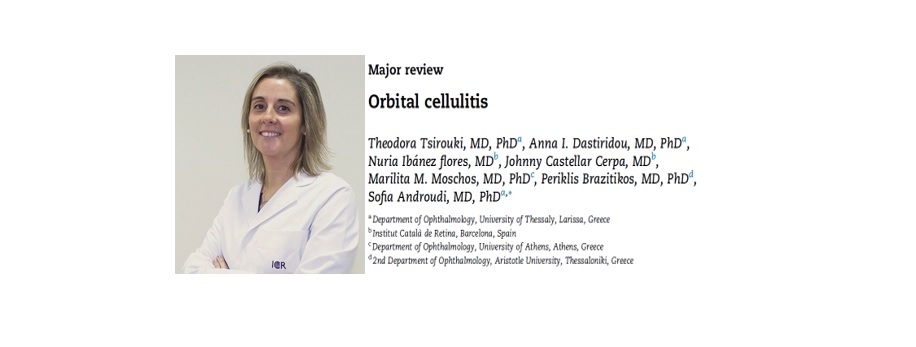
Dr. Núria Ibáñez, head of the Department of Orbit and Oculoplasty of the ICR, has published an article in the prestigious international scientific journal Survey of Ophthalmology about orbital cellulitis.
Orbital cellulitis is an inflammatory process of the tissues of the orbit back to the orbital septum. This term is commonly used to define an infection of the orbit.
The factors to be taken into account for the detection of this pathology are the presence of erythema and edema in the eyelids, proptosis (anterior displacement of the eyeball), presence of fever, loss of vision, eye pain and diplopia (double vision).
This infection can be very serious, even causing blindness of the patient, which is why it is very important to know the symptoms and their management, in order to quickly and effectively apply the correct treatment and to reduce the bad consequences of the disease. This article is an update of the management of this pathology and an acknowledgment to the scientific work.
In the article, it is made a review about intraorbital infections, their causes, characteristics and clinical manifestations, diagnosis and the most appropriate treatment. This article is a summary of the most relevant articles published so far in the scientific literature on orbital cellulitis.
This extensive article provides data on microbiology, epidemiology, and presents a classification of intraorbital complications. In addition to that, the clinical manifestations and complications that may arise due to this disease are detailed.
Morevoer, it exposes the procedure to make a good diagnosis, the differential diagnosis and the treatment to be followed, either medical, with antibiotics, or associated with surgery.
The study concludes that, to this day, orbital cellulitis can imply very serious consequences at the ophthalmological and neurological level and can have a fatal impact on the patient.
The study underlines the great importance of early detection of the disease and the management of this pathology to preserve vision and avoid further complications.
It also emphasizes the use of new antibiotic agents and the importance of a multidisciplinary approach for the correct monitoring and management of the disease.
Future studies on the subject may benefit to a greater extent the recovery and early detection of this disease.
This study is a progress in scientific evidence on the diagnosis and management of this pathology, as well as a recognition of scientific research excellence.

Contact us or request an appointment with our medical team.